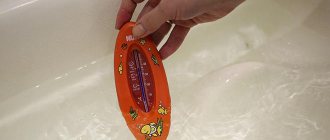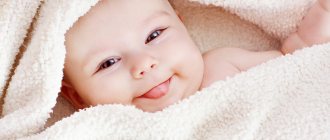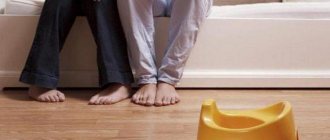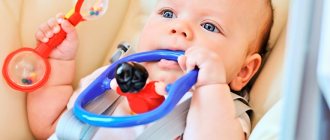What is saline solution?
The drug is made based on sodium chloride and water.
The substance is called physiological because its basic chemical and physical properties coincide as closely as possible with the parameters of human blood plasma. This product is the simplest isotonic solution. Many doctors advise using saline solution to rinse the nose at home. It helps cope with rhinitis and sinusitis. The drug is absolutely safe, and therefore can be used for the treatment of children and pregnant women.
Saline solution can be bought at any pharmacy. The simplest and most affordable option is glass bottles, which are closed with a rubber stopper and metal foil. Their capacity can be 100, 200 or 400 ml.
To use the solution, the foil can be removed and the cap opened. However, you can use saline solution for no more than 1-2 days. The solution will then become non-sterile. To preserve the characteristics of the medicine, you need to open a small metal cap and draw the substance with a syringe.
For more convenient use, you can purchase the substance in small ampoules, which should be used at a time. However, it is important to take into account that if such a container is opened carelessly, there is a risk of glass fragments getting into the liquid.
You can also find more convenient products on sale, which are made on the basis of saline solution and are equipped with special attachments for the nose. This category includes any substances based on sea water or ordinary salt, having a concentration of 0.9%:
- aqualor;
- aquamaris;
- quickx;
- salin;
- physiometer.
How to rinse a child's nose?
Nasal rinsing can be done using a homemade or ready-made solution.
Prepare the solution at home: dissolve 1 teaspoon of salt in 1 liter of boiled water. You need to make sure that the salt is completely dissolved. The solution is only valid for 24 hours. Using a homemade solution is not very convenient; it’s easier to buy one. ⠀ Pharmacies sell a physiological solution that can be used to rinse the nose, and also produce special products. They must be used strictly in accordance with the instructions. For example, you can use Humar Forte sea water.
For nasal toilet, a solution with varying salt concentrations is used. For daily hygiene and cold prevention, saline solution is used. To treat a runny nose, a more concentrated, hypertonic solution is used. It helps relieve swelling and dries out the mucous membrane. If you are unsure which solution to choose, consult your pediatrician.
Indications for use
Key indications for the use of saline include diseases of the respiratory system:
- acute respiratory viral infections;
- drug-induced rhinitis;
- vasomotor rhinitis;
- sinusitis;
- allergic rhinitis;
- fungal infections of the upper respiratory tract.
Also, an indication for the use of saline solution at home is prevention in the midst of epidemics and a seasonal increase in the incidence of ARVI. In addition, the substance is used to moisturize the nasal cavity when the air in the room is very dry.
Treatment of a runny nose
The solution allows you to quickly cure acute rhinitis (runny nose), reduce the need for the use of other medications (for example, antibiotics). With timely treatment of the nasal cavity, the disease can be reduced to two to three days.
Efficacy for sinusitis
For a disease such as purulent sinusitis, saline solution is recommended as a medicine for washing pus from the sinuses and nasal appendages. Thanks to the procedure, you can prevent and stop the spread of germs. Irrigation should be carried out every hour. It is also recommended to alternate means when washing (for the first time - saline solution, then - with a liquid that contains herbal preparations).
For sinusitis, rinsing the nose with saline is an additional measure. It is not an independent operation; it is used in combination.
Rinse throat
For throat diseases, the solution is also used. Moreover, it is used in pharmaceutical concentration. There is no need to dilute it with water. You need to gargle at least twice a day. In a situation where the disease occurs with complications, it is necessary to treat the throat at least five times a day. In this case, you need to combine it with the use of other antiseptic solutions. It is recommended to irrigate not only the throat, but also the nose. For inflamed tonsils, it is recommended not to rinse, but to organize absolute rinsing (the liquid passes through the nose into the mouth).
Devices for the procedure
There are several devices that can be used to rinse a child’s nose with sodium chloride.
- Pharmacies sell a special device for this procedure. It looks like a small teapot with a handle and a rather narrow spout, which makes it easier to pour in saline solution.
- A syringe or a small rubber bulb.
- Often, a baby has to drip saline into the nose using a pipette.
- One of the most convenient ways is to use an inhalation nebulizer.
Contraindications
The drug is completely safe. Saline solution can be instilled into the nose even for newborn children, pregnant and lactating women. If used correctly, this product does not cause adverse reactions or allergies.
However, sometimes the use of saline solution to rinse the nose is prohibited. Key restrictions on the use of the substance include the following:
- large polyps, tumor formations in the nose;
- a tendency to frequent nosebleeds;
- complex forms of heart failure;
- severe kidney pathologies.
How to prepare a solution for the procedure
A small child does not yet know how to blow his nose on his own, so parents need to learn how to rinse the nose with saline on their own.
What is saline solution? This is a solution of sodium chloride diluted in water. It’s not difficult to prepare, the main thing is to know the correct percentage of salt.
The most physiological salt concentration for the body is 0.9%. To get this result, you can take a glass with a capacity of 250 ml, pour water into it and slowly add 2.5 grams of table salt.
If the solution is made for a baby, then a little less salt can be used.
Pharmaceutical preparations containing sodium chloride
The isotonic solution is sold in bottles or sealed bags. Such containers are completely sterile and sealed with an airtight stopper. The drug is taken into a syringe by puncturing the rubber stopper. Pharmacy options for nasal rinsing are much more convenient. They are available in drop or aerosol format. They have a special sprayer that converts saline solution into an aerosol. The safest and most universal are those products based on sea water.
All pharmaceutical solutions for rinsing the nasal passages are used heated. They are heated in the hand for 30 minutes. The use of sea water-based products moisturizes the mucous membrane, washes out microbes and reduces inflammation. Preparations in spray format are highly effective, but are not used for children under 2 years of age .
Rules for rinsing the nose of children at home
So, how to properly rinse a child’s nose with saline solution or another product? The scheme is quite simple: 1. Clear the nose of mucus. Older children can already blow their nose, and an aspirator will help kids. If thick mucus is difficult to come out, use vasoconstrictor drops. 2. Rinse one nostril. The child must hold his breath - during this, using a pipette or balloon with a special nozzle, liquid is injected into one nostril. If rinsing is performed with a balloon, the child's head should be tilted slightly forward. The procedure can be carried out when the child does not cry or scream. 3. Remove the solution. In young children this is done with the help of an aspirator, while an older child can blow his nose on his own. Please note:
it is not necessary to force the liquid to flow out of the other nostril. This recommendation is addressed to adults, but children may be frightened by this method of removing liquid. 4. Repeat the procedure from the second nostril. After four hours, nasal rinsing should be repeated.
How to make saline solution for rinsing a child’s nose yourself
Sometimes there is no time to go to the pharmacy, or the need to rinse your nose arose late at night. In this case, a logical question arises regarding how to prepare saline solution for rinsing the nose. To do this you will need the following:
- Boiled water;
- Iodized or sea salt. Regular table salt is not effective enough;
- The container in which the saline solution will be prepared.
To improve the effect, a drop of iodine can be added to the composition. The recommended proportions for adults are a level teaspoon of salt per liter of water. The water must be warm so that the salt dissolves well in it.
You can also add soda to the mixture at the tip of a knife. It helps soften the nasal mucosa. Maintaining proportions is very important! Otherwise, such a medicine will only cause harm.
For a child, the solution is made less concentrated. In particular, saline solution for rinsing the baby’s nose is made at the rate of a quarter teaspoon of salt per liter of water. For children over a year old, you can add a little less than half a spoon.
The container in which you plan to prepare the saline solution must be washed clean. This directly affects the purity of the solution. There is no talk of sterility here, so the resulting saline solution is used exclusively for rinsing the nose.
How to Make Saline Nasal Solution
The recipe for preparing a saline solution to clear mucus from the nose is simple; it requires adherence to clearly established proportions. If these proportions are not observed, the desired effectiveness of the procedure will not be achieved. So, how to prepare saline solution correctly? You will need one liter of warm boiled water and 1 teaspoon of table salt, which must be diluted until completely dissolved. The resulting liquid is recommended for use by both adults and children.
A ready-made sterile solution is sold at the pharmacy for those who cannot, for one reason or another, prepare it at home. The price of the drug is quite affordable, so it will not cause large financial expenses. The sterile solution is best used in combination with other drugs, directly for inhalation. The quality of the liquid in this case should be high.
The need for nasal rinsing and contraindications
Using saline solution to rinse a child’s nose is advisable in the following cases:
- To moisturize the mucous membrane;
- If it is necessary to eliminate pathogens;
- If mucus has accumulated in the nose;
- In case of inflammation of the nasal mucosa and sinuses in the nasal cavity;
- If the microflora in the nasal cavity is disturbed;
- It is also advisable to rinse the nose with saline solution for sinusitis.
There are no contraindications as such when using sodium chloride. Therefore, saline solution can also be used for preventive purposes. But if a child’s temperature rises or purulent nasal discharge appears, you should stop rinsing and consult a doctor.
When is it better not to rinse your nose?
Even the most effective procedures do not always work. You should avoid rinsing your nose if:
- the baby is capricious, nervous or afraid
- for rinsing you only have a solution of suspicious quality
- you rinse the nose, but the child’s condition worsens, in this case it is better to go to the pediatrician.
There are practically no contraindications to rinsing the nose with saline solution. Exception: intolerance to the components of the composition. ⠀
Author of the article: Daria Sovina
comments powered by HyperComments
Performing the procedure on a child over one year old
You can rinse the nose of a child under 3 years of age as follows. If the baby already knows how to blow his nose, you need to ask him to blow his nose and help him clean the right and left nostril alternately. For babies older than one year, you can drop 2-4 drops of saline solution into the nose to soften dried crusts.
To rinse the nasal passages, you will need to prepare a rubber bulb with a soft tip or a syringe without a needle. The child should bow his head over the sink and turn it to the side so that one nostril is slightly higher than the other. The baby's mouth should be slightly open during the procedure.
It is necessary to slowly, without creating pressure, pour the prepared saline solution into the “upper” nostril with a rubber bulb or syringe. The injected liquid should pour out from the “lower” nostril along with the mucus that has accumulated in the nose. In this way, the right and left nostrils are cleaned alternately. After completing the procedure, you should invite the child to blow his nose well or remove the remaining liquid with an aspirator.
How to rinse your baby's nose with saline solution
Rinsing the baby’s nose is done for diseases of the nasopharynx, as well as for the prevention of infectious diseases.
The procedure for rinsing a baby’s nose probably seems very complicated to an inexperienced mother. But in practice, everything is not so scary. If you take saline solution in a bottle, you will additionally need an aspirator, a syringe (without a needle) and cotton swabs or some cotton wool.
Step 1. First, remove mucus from the child’s nasal passages. The easiest way to do this is with an aspirator, but you can also use a small bulb or a special tube with a rubber tip.
Step 2. Then take a syringe (5 cubes) without a needle and fill it with saline solution.
Step 3. Instillation itself. The baby needs to be placed on his side. If the baby is lying on the right side, instillation goes into the left nostril. Squeeze half the contents out of the syringe. Carefully turn the baby over and repeat the procedure for the second nostril.
Step 4. Take the aspirator again (bulb, tube - whatever) and remove the remaining mucus.
Step 5. Use cotton pads to clean the nostrils. We do this with light twisting movements; there is no need to insert the tampon deeply, otherwise there is a risk of harming the baby or hurting him.
Features of the procedure for washing with saline solution for newborns and infants
Correct position when instilling saline solution in a newborn
Experienced pediatricians advise mothers to use 0.9 percent sodium chloride to rinse the nasal passages of children from the moment of their birth. In this case, you must be careful, do everything slowly and carefully, so as not to harm the baby.
- Infants have very weak, unformed immunity. They are joined by infection through the respiratory tract, which leads to illness. If you use saline solution and rinse your nose with it, the accumulated microorganisms will disappear.
- In addition to protecting against infections, saline solution can flush out the allergen from the nasal passages. This could be pollen or dust that got into the child’s nose while walking and triggered an allergic attack.
- In infants, not all airways are open until they reach six months. The solution can clear mucus buildup from them. It can also be used for rhinitis, inflammation of the maxillary sinuses and inflammation of the adenoids.
If your baby’s problem with nasal congestion does not go away with prolonged use of saline solution, you should contact your pediatrician with a complaint. Breathing problems can be associated not only with the accumulation of mucus in the respiratory tract, but also due to a deviated nasal septum or other anatomical pathology.
Why do you need saline solution to rinse your nose?
Saline solution is a medical product with a wide range of applications. It is used to rinse the nasal passages, dilute concentrated drugs, and accelerate wound healing.
The composition of the saline solution is simple: water and table salt (sodium chloride). The optimal concentration of this solution is 0.9%, i.e. 2.5 g of salt per 250 ml of water. But it is not recommended to prepare such a product yourself - at home it is impossible to achieve the necessary sterility of the ingredients and containers. In addition, the cost of saline solution in pharmacies is low, and the shelf life is quite long. It can be purchased in advance and left in the home medicine cabinet, and if a problem is discovered in the baby, it will be possible to take really prompt measures to eliminate it.
Saline solution is used to cleanse the nasal passages of a newborn in order to:
- free them from mucus accumulation
- remove dry crusts
- moisturize mucous membranes in dry air
That is, saline solution is relevant not only when the baby gets sick with rhinitis, but also if the air in the room is too dry (which often happens during the heating season).
If one of the family members has a cold, washing the baby's nose with saline can be used as a preventive measure - firstly, it washes away harmful bacteria, and secondly, it prevents the mucous membrane from drying out, and when dried, it becomes more susceptible to viruses.
However, you should not resort to rinsing a child’s nose with saline unless absolutely necessary - this can become addictive, and the body will no longer be able to resist infections on its own.
Inhalations
Such procedures with saline solution are effective both for the treatment of rhinitis and for the prevention of such a disease. To carry them out, a nebulizer is used, into which it is best to fill a sterile pharmaceutical saline solution.
The volume of solution used depends on the age of the baby. For small children, 3-4 ml is enough, and for schoolchildren the dosage can be increased. The procedure is carried out 1-3 times a day, and its duration is from one to five minutes. The baby should inhale the saline solution calmly, and for 1 hour after inhalation you should not feed the child or walk with him.
How to use correctly?
Burying
During infancy, the most optimal way to care for the baby's mucous membranes is to instill the product into the nose.
- 3-4 drops are dripped into each nostril of the baby;
- the procedure can be done up to 5 times a day, and if necessary, you can increase the frequency of instillations;
- The neutrality of the composition of the drug allows the use of saline solution for both newborns and older children.
Inhalations
Similar procedures with saline solution should be carried out using a nebulizer - a special device that breaks the active substance into small particles and ensures their delivery directly to the mucous membranes.
Inhalations will be very effective both for the disease and for prevention. Many mothers use procedures with saline solution to moisturize mucous membranes in dry air during the heating season.
Inhalations with a nebulizer should be carried out up to 3 times a day, using saline solution according to the age recommendations in the instructions for the device. A three to five minute procedure is enough for the baby’s mucous membranes to be moistened, and their contents can subsequently be easily removed with an aspirator.
It is important that the child is calm during inhalation. Not all children perceive such procedures normally, so your child needs to be introduced to the nebulizer gradually.
conclusions
- Saline solution is a unique and effective means of combating viruses and microbes.
- Wide spectrum of action of the drug.
- It is characterized by low cost.
- Used in the treatment of children, pregnant and lactating women.
- The shelf life depends on the method of “extracting” the liquid from the container or the method of its preparation.
- Do not use if there is a risk of bleeding or swelling of the mucous membrane.
- The number of procedures using the drug depends on the severity of the disease.
Sources
- https://doctos.ru/np/fizrastvor-dlya-promyvaniya-nosa.html
- https://o-krohe.ru/nasmork/fizrastvor/
- https://dokLOR.com/nos/nasmork/lechenie-n/v-domashnih-usloviyah/promyvaniya/sredstva/fizrastvor.html
- https://MedBoli.ru/dyhatelnaya-sistema/lechenie-i-profilaktika/kak-prigotovit-fizrastvor-dlya-promyvaniya-nosa-rebenku-v-domashnih-usloviyah
- https://lovingmother.ru/zdorove/lekarstva/fizrastvor-dlya-promyvaniya-nosa.html
- https://kpoxa.info/uxod-razvitie/promyvat-nos-fizrastvorom-rebenku.html
- https://VseProRebenka.ru/zdorove/preparaty/fizrastvor-dlya-promyvaniya-nosa-novorozhdennomu.html
- https://nos-zdorov.com/procedury/promyvanie-fizrastvorom-detyam











